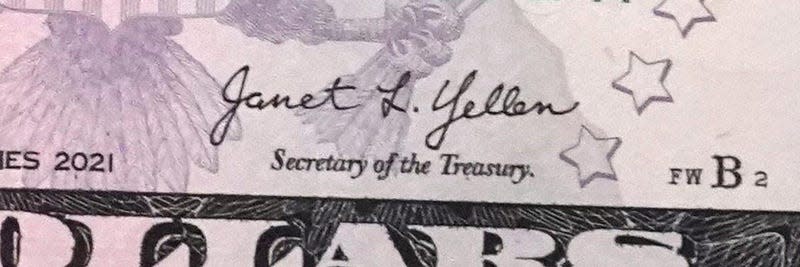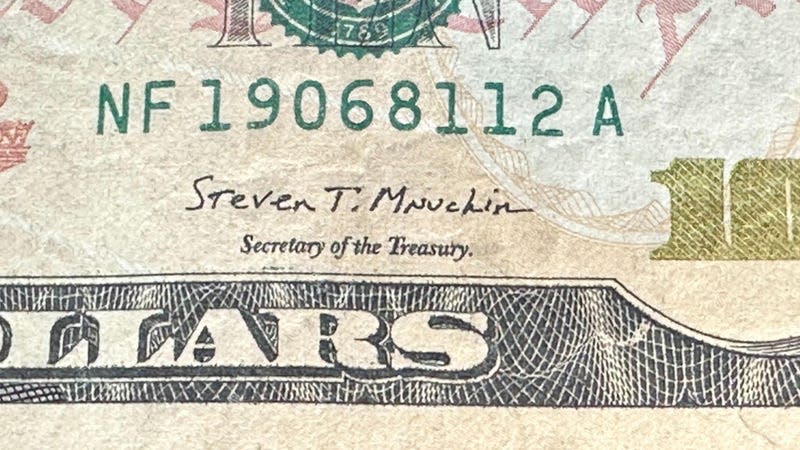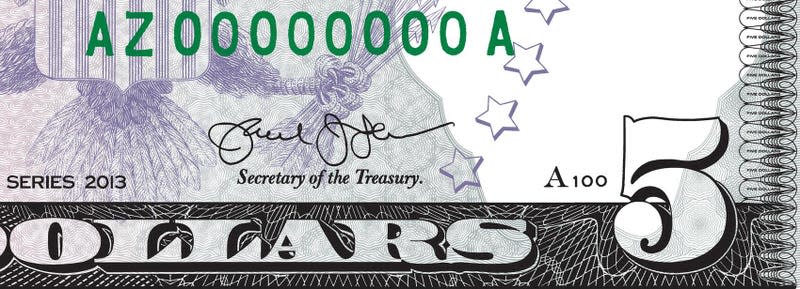Why Janet Yellen's signature on US paper currency is so notable
Two women’s signatures appeared on US currency for the first time ever this week. On Nov. 8, bills with the signatures of Janet Yellen, the first female US Treasury secretary, and Marilynn Malerba, the first Native American US treasurer, were printed.
The development marked another advance for women in the male-dominated fields of finance and economics, and another notch in Yellen’s history as one of the most powerful economists in the world. Yellen has served as the chair of the Federal Reserve and head of the White House Council of Economic Advisors.
Read more
Hers was also one of the most elegant signatures on US currency in recent history. Compare her cursive to the block lettering used by her predecessor, Trump appointee Steven Mnuchin, and the messy scrawl from Jacob Lew, who was Treasury secretary in the Obama administration.

Janet Yellen’s signature.

Steven Mnuchin’s signature.

Jacob Lew’s signature.
Why did it take so long for Yellen’s signature to appear on the paper currency?
Yellen provided her official signature to the US Bureau of Engraving and Printing in March 2021. But Biden didn’t announce his appointment of Malerba as treasurer until June 2022, and she wasn’t sworn in until September. Tradition calls for signatures of both the Treasury secretary and the US treasurer to feature on the currency, and so Yellen waited it out while Mnuchin’s name continued to be the one on new bills in circulation.
A brief history of signatures in the US
US Treasury secretaries have been putting their autographs on paper currency since 1914. Here are some other important dates in the history of signatures in the US.
1869: The New Hampshire supreme court case Howley v. Whipple establishes that agreements transmitted via telegram count as a signed contract in the US.
1942: Robert De Shazo develops the first commercially successful autopen, a machine that can automatically write a person’s signature, for the US Navy. The devices quickly gain widespread use throughout US federal agencies, Congress, and the White House.
1997: Fax machine sales peak and begin a long, slow decline; the obsolete technology hangs on, in part, because of the need to physically sign paper documents.
2000: In the US, the E-Sign Act gives contracts signed electronically the same weight as contracts recorded with ink and paper. US president Bill Clinton signs the bill into law both electronically and with a pen.
2020: Shares of the electronic signature company DocuSign soar as the business world shifts to remote work during the pandemic. (The stock later crashes as the pandemic wanes and workers return to the office.)
With reporting by Nicolás Rivero.
More from Quartz
Sign up for Quartz's Newsletter. For the latest news, Facebook, Twitter and Instagram.


